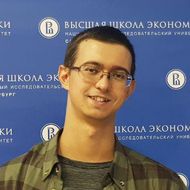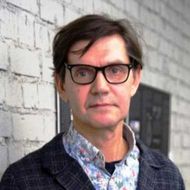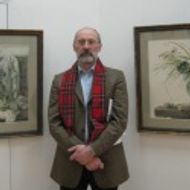- A
- A
- A
- ABC
- ABC
- ABC
- А
- А
- А
- А
- А
- HSE Campus in St. Petersburg
- School of Arts and Humanities
- Department of History
- News
- Boundaries of History - Louise McReynolds
-
Department
-
Educational programmes
Address:
190068 Saint Petersburg
123 Griboedov channel, Room 123
Phone:+7 (812)786-92-49
Postal address:
190068 Saint Petersburg
123 Griboedov channel
The Department of History was created in 2012. The overarching goal of the department is systematic development of the field of global, comparative, and transnational history as a potent tool of overcoming the limitations of national history canon, fostering interdisciplinary dialogue in the field of social sciences and humanities, and brining new public relevance to historical knowledge. The department mission includes the development of new type of historical undergraduate and graduate education in Russia and pioneering new research fields in Russian historiography in dialogue with the global historical profession.
 Social History of the True Orthodox Christians Wandering in Russia. Capitalism, Communism, and Apocalypse, 1900-1930
Social History of the True Orthodox Christians Wandering in Russia. Capitalism, Communism, and Apocalypse, 1900-1930
L.; NY: Routledge, 2025.
Historical Materialism. 2025. Vol. 33. No. 2. P. 43-80.
In bk.: Women, Gender, and Technosciences, 1900–2020. A Beard to Govern. Routledge, 2025. Ch. 7. P. 123-140.
Khvalkov E., Levin F., Кузнецова А. Д.
Working Papers of Humanities. WP. Издательский дом НИУ ВШЭ, 2021

Boundaries of History - Louise McReynolds
Professor McReynolds started her speech explaining the project significance. She quoted Geoffrey Hosking’s adage that “the Britain had an empire, whereas Russia was an empire” that spoke to fundamental conceptual differences between the techniques that democratic vs. autocratic governments used as they colonized territories throughout the 19th century. This maxim turned on the fact that western countries annexed territories overseas, whereas the Russians expanded into contiguous areas. This truism, however, failed to address either the theories that motivated the different strategies for expansion, much less their consequences. While the notion of the nation state was associated with modernity and progress, empires were supposed to be outdated. Decolonization process continued privileging of the nation state. Modern nationalism, however, lost a blush of progress with the rise of the Nazi Germany as a nation state. According to Professor McReynolds the contemporary rise of nationalisms ruined all the attempts to look at the Nazi Germany as a Sonderweg. To provide a fresh perspective Professor turned to the 19th century to explore the ways in which empire came to be imagined in the context of the rising nationalism. She explored the evolution of professional archeology emerging in the 19th century as a novel kind of discipline for studying human cultures.
As Professor McReynolds pointed out, archeology played a distinctive and pivotal role because of its intrinsic duality. Being a modern discipline it aimed at uncovering pre-modern, that permitted historical and social relations to be imagined in new ways. Archeologists pieced together the diversities in a material culture layered beneath territories that had borders both real and imagined. Many artifacts found at digs could be seen as evidence of cultural distinction and therefore as a basis for the independent polity. Archeology was thus making it possible to identify ethno-national heritages within imperial spaces. Archeologists insisted to be neutral and objective as scientists. Claiming to describe instead of interpreting they privileged from it. However, they fetishized their subjects by rendering their description into narratives.
The discovery of Pompeii in the mid 18th century sparked fascination with the material past. As all scholars that time were international and much of the groundwork for archeological explorations in Russia, particularly in Crimea, was laid by foreigners. Thus, before the issue of national languages arose, initial coding in Russia and elsewhere came in Latin and Greek. Russia’s first archeological treasures were found in the sites of the ancient Greek colonies along the Black sea littoral. But interest in material past prompted a new set of problems. What to do with tangible artifacts? Many of them became parts of personal collections. The imperial Hermitage museum served as a repository only for the most elegant objects. The first truly archeological museum was opened in 1826 in Kerch.
Thus, archeology flourished under the patronage of antiquities enthusiasts. Professor McReynolds listed a number of first generation archeologists and their supporters. For example, by quoting the dairies of the Serbian born Anton Ashik, who had worked in the Asiatic Department of the Ministry of Foreign Affairs, she showed how his personal perspective on the classical Greece he was excavating was inflected with the local ethos of Orthodoxy and thus reproduced local culture.
Another point was that among educated circles rose a desire to explore the details about the land and its previous inhabitants as Southern Russia was that time the last that joined to the Russian Empire. A Russian archeologist Nikolay Murzakevich had not registered Russia’s historical context with Greece and Italy as moments of its connectedness to the civilizations of the antiquity. He saw Russia on the other side with the barbarians and Mongols, those who established what could be understood as their national homelands in the region. This anticipated how the imperial archeological commission formed in 1859 would later define its task: “The search for objects of antiquity predominantly relating the history of the fatherland and the lives of the people who have one time lived in the space currently occupied by the Russia”.
When Transcaucasia had been absorbed into the Russian Empire Murzakevich was one of the first who published descriptions of the religious ruins. On a broader scale a lion share of interest of the Russian archeology shifted from Greece to its reincarnation as Byzantium. Several factors accounted for this swing and among them was the rise of the interest towards biblical archeology in the Holy Lands. The shift towards the Russian Imperial identity was commensurate with both military conquest and the political dream of conducting a civilizing mission. The archeological component of this theorizing was less brutal and more inclusive. But it also depended on the re-conceptualization of the East. Incorporating the East became essential to Russia’s imperial imaginary.
In preparation to the Empire’s 6th Archeological Congress in Odessa Moscow archeological society dispatched a small party to Constantinople to study Byzantine churches and other monuments. Among the participants were Nikodim Kondakov and Fyodor Uspenskiy. Kondakov’s analysis of the Russia-Byzantine archeological connections made a meaninigful intervention into historiography. His primary objective was to revise the Western-dominated historiography of Byzantium that had diminished its cultural significance in relation to the Roman Empire. Kondakov specified the importance of Christian archeology. The notion of the Christian East was crucial for the Russian archeology as it was supposed to be closer to the Russian history in comparison to antiquity.
In 1900 Uspenskiy led an expedition to Syria to explore the intimate life of Christianity in the 5th and 6th centuries. This was particularly important for the notion of the Christian East because Syria lay at the center of early Christianity; many Syrians participated in the working out of both minor and major dogmatic questions. Later Kondakov’s followers developed the argument that Christianity was more an Eastern rather than Western religion. Kondakov had brought attention to the differences in interpretation between Western and Russian archeologists when presumably looking at the same artifacts. These conclusions developed into the argument that being closer to the East Russians were able to analyze it better.
Professor McReynolds also gave an example of the Georgia-born historian Nicholas Marr and his work in the expedition to the ancient Armenian city called Ani. She spoke about his interpretations of the findings, particularly the statue of the king Gagik I of Armenia. This statue showed Gagik holding a model of the church of St. Gregory. But at the same time the king was wearing a turban on his head and a khalat. These findings provided crucial evidence to support the central element of his key to Ani: how Christians and Muslims had lived together in relative harmony while their cultures had been shaping each other. In the turban of king Gagik Marr found evidence of the origins of the Armenian kingdom coming more from the Eastern Sassanid than the Western Byzantine empires. He also identified residences where Muslims, Christians, Turks, Persians and Armenians all lived. He noted that in the list of Christian princes Muslim names often dominated as they were the main historical actors in the Medieval East. In fact, Marr had argued that Ani reached its cultural heights under the rule of foreigners. For the Marr it was not simply the Muslim rule but an international urban population that lived in peace with other groups.
Marr considered that Russian scholars were uniquely positioned to study the Caucasus because of another worldview. This implied the replacement of the European humanism with universalism, which was profoundly anti-nationalist. Finally, Marr theories contributed to the final political solution when the Caucasus became a part of the Soviet State. Pointing this out Professor McReynolds concluded her talk with the question whether the 1991 really dissolved the debate about the primacy of the nation-states.
During the question section Professor McReynolds discussed with the audience several questions. First, the question of originality of the Russian archeology was discussed. Professor stressed that Russian archeological school significantly differed from, for example, the British one as Western archeologists were much more interested in establishing hierarchies. According to her, Western archeology was deeply racialized and used to explain and justify colonial conquest while Russians had another approach by constantly referencing the ways in which societies worked together rather than superseded one another because of the superiority of the superseding culture.
The following question was built upon the Marina Mogilner’s argument about the idiom of mixed physical type that was developed by the Russian physical anthropology. Answering the question about the presence of similar tendencies in the field of archeology Professor McReynolds agreed that the same process took place there as Russian archeologists produced evidence of two different cultures in the same spot at the same time.
Another question was about the transformation of classical heritage of the anthropology in case of Russian Empire. According to Professor McReynolds there was no attempt to make Russia a part of classical civilization in digging the Crimean ancient cities. But there were scholars and archeologists, such as Boris Farmakovsky, who did not admire the “Byzantine turn” whose professional trajectories and ideas require further exploration. Another point discussed was the fact that most representatives of the Russian archeology were not involved into re-interpretation of the findings of their Western colleagues. For example, while Kondakov was familiar with all Western theories and challenged them he was not able to establish his reputation to be translated. Thus, all the works were Slavic oriented.
Answering the question about the supposed interconnections between the shift from the European humanism to universalism and the pan-Slavic ideas Professor McReynolds rather disagreed with such vision; acknowledging some overlap between these ideas she rather stressed the Russian archeologists’ frustration with their understanding of how humanism was set in classical antiquity. In her opinion for them it was basically not the best way of understanding the world history.
One of the last questions was devoted to the differences between the attitudes towards archeological excavations in the various distant parts of the empire, particularly the Russian Far East. However, Professor McReynolds opinion was that Russian archeology did not really get that far in the 19th century, having concentrated on the Central Asia.
Finally, GIS database and the possibilities it provided for a better study of the history were discussed. Seminar participants made several propositions for applying the timeline functions for better understanding of the dynamics of the excavations in the Russian Empire. Making a call to join digital humanities Professor McReynolds expressed desire to find a Russian research assistant with a good skill of GIS to work on the future projects.
Professor, University of North Carolina
Report:

Assistant
Alexander Semyonov
Professor


